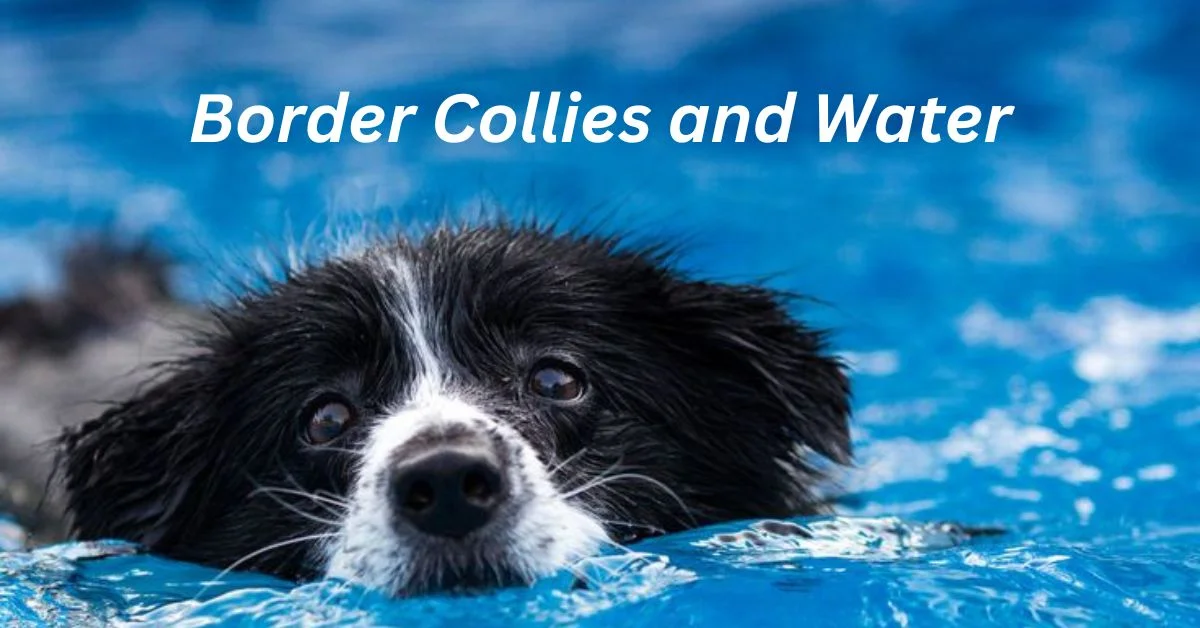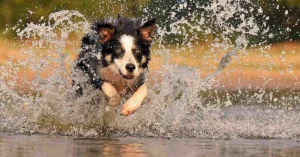Safety & Care
The Essential Guide to Freeze Warning Systems: Stay Prepared!

Winter weather can bring beauty and serenity, but it also brings its fair share of challenges. One such challenge is the threat of freezing temperatures that can wreak havoc on our homes, gardens, and even our own safety. That’s where freeze warning systems come in handy. Whether you’re a homeowner or a business owner, having a reliable freeze warning system in place is essential for staying prepared and protecting your property.
In this comprehensive guide, we’ll dive into everything you need to know about freeze warning systems – from understanding how they work to choosing the right one for your needs. We’ll also cover installation and maintenance tips, best practices for using these systems effectively, and common mistakes to avoid along the way.
Understanding Freeze Warning Systems
Freeze warning systems are essential tools for keeping you and your property safe during freezing temperatures. These systems provide crucial information about impending freezes, allowing you to take necessary precautions and protect your assets.
At its core, a freeze warning system is designed to monitor the temperature in your area and send out alerts when there is a risk of freezing conditions. This can be especially useful for farmers, gardeners, homeowners with outdoor plumbing, and anyone who relies on sensitive equipment or infrastructure that can be affected by cold weather.
One type of freeze warning system is a temperature sensor that measures the ambient temperature and sends alerts if it falls below a certain threshold. Another type includes more advanced features such as moisture sensors to detect potential icing conditions.
When choosing a freeze warning system, consider factors such as accuracy, range of communication (e.g., cellular network or Wi-Fi), ease of installation and use, reliability of alerts, and compatibility with other devices or platforms you may already have in place.
To install a freeze warning system properly, follow the manufacturer’s instructions carefully. Typically, this involves placing sensors strategically around your property where they can accurately measure the temperature. Regular maintenance should include checking battery levels or power connections to ensure uninterrupted operation.
It’s important to note that while freeze warning systems are effective tools for staying prepared against freezing temperatures, they should not replace other preventive measures like insulating pipes or covering plants. Instead, these systems complement existing strategies by providing timely alerts so you can take immediate action when needed.
Importance of Freeze Warning Systems
When it comes to protecting your property and ensuring the safety of your loved ones, having a freeze warning system in place can make all the difference. These systems are designed to alert you when temperatures drop to potentially damaging levels, allowing you to take proactive measures and prevent costly damage.
One of the key reasons why freeze warning systems are important is that they help protect your pipes from freezing. When water freezes inside pipes, it expands and can cause them to burst. This not only leads to expensive repairs but also potential flooding and water damage.
In addition, freeze warning systems play a crucial role in safeguarding sensitive equipment or materials that may be affected by extreme cold temperatures. Whether it’s agricultural machinery, HVAC units, or even valuable artwork stored in a warehouse, these systems provide vital notifications so that appropriate action can be taken ahead of time.
Furthermore, freeze warning systems are essential for maintaining the comfort and well-being of individuals living or working in cold climates. By receiving alerts about dropping temperatures, residents can prepare by adjusting thermostats or adding extra insulation as needed.
Investing in a reliable freeze warning system is an effective way to mitigate risks associated with freezing temperatures. It provides peace of mind knowing that you will be notified promptly if there is any potential threat posed by extreme cold weather conditions – enabling you to act swiftly and appropriately before any significant damage occurs.
Types of Freeze Warning Systems
There are several different types of freeze warning systems available on the market today. Each type offers its own unique features and benefits, so it’s important to understand the options before making a decision.
1. Temperature-based Systems: These systems use temperature sensors to monitor the ambient temperature and provide warnings when freezing conditions are detected. They can be set to trigger alerts at specific temperatures, allowing you to take action before any damage occurs.
2. Water Detection Systems: These systems are designed to detect water leaks or pipe bursts that can lead to freezing conditions. They use moisture sensors placed in key areas such as basements or crawl spaces to alert you when water is present.
3. Remote Monitoring Systems: With these systems, you can receive freeze warnings directly on your smartphone or computer from anywhere in the world. They often come with additional features like humidity monitoring and power outage detection for added peace of mind.
4. Integration with Home Security Systems: Some freeze warning systems can be integrated into existing home security systems, providing an all-in-one solution for protecting your home from both intruders and freezing temperatures.
When choosing a freeze warning system, it’s important to consider factors such as ease of installation, reliability, and compatibility with other smart devices in your home network. Additionally, think about whether you want a wired or wireless system depending on your specific needs and preferences.
By avoiding common mistakes like neglecting necessary repairs or failing to test the system regularly, you can ensure that your freeze warning system will be ready when winter weather strikes.
Factors to Consider when Choosing a Freeze Warning System
When it comes to choosing a freeze warning system, there are several key factors that you should consider. First and foremost is the accuracy of the system. You want to make sure that the temperature readings provided by the system are reliable and up-to-date.
Another important factor is the range of temperatures that the system can monitor. Different areas may have different temperature thresholds for freezing conditions, so it’s crucial to choose a system that can accommodate your specific needs.
The ease of installation and maintenance is also something to keep in mind. Look for a freeze warning system that is simple to set up and doesn’t require constant monitoring or adjustments.
Additionally, consider whether you need a wired or wireless system. Wired systems tend to be more reliable but may require professional installation, while wireless systems offer greater flexibility but can sometimes be less accurate.
Think about any additional features or capabilities you might want in a freeze warning system. Some systems come with remote access options or integration with other home automation devices, which can enhance convenience and functionality.
By carefully considering these factors, you’ll be able to choose a freeze warning system that meets your specific requirements and helps keep you prepared for potential freezing conditions!
Installation and Maintenance of Freeze Warning Systems
Installation and maintenance are crucial aspects of ensuring the proper functioning of freeze warning systems. When it comes to installing a freeze warning system, there are a few key considerations to keep in mind.
It is important to choose an optimal location for the system’s sensors. These sensors should be strategically placed in areas where freezing temperatures are most likely to occur, such as near pipes or outdoor water sources. Additionally, ensure that the sensors are properly insulated and protected from extreme weather conditions.
Once the system is installed, regular maintenance is essential for its effectiveness. This includes checking the batteries regularly and replacing them if needed, as well as testing the system periodically to ensure that all components are working correctly.
Furthermore, it is vital to keep an eye on any potential issues or malfunctions with your freeze warning system. If you notice any unusual behavior or inconsistencies in temperature readings, prompt action should be taken to address and resolve these problems.
By following these installation and maintenance guidelines for your freeze warning system, you can have peace of mind knowing that you will be alerted promptly in case of freezing temperatures. Remember that staying proactive in maintaining your freeze warning system will help prolong its lifespan and maximize its efficiency when you need it most!
Best Practices for Using Freeze Warning Systems
- Placement matters: When installing freeze warning systems, it’s essential to choose the right location. Place sensors in areas where freezing temperatures are most likely to occur, such as near pipes or outdoor plants. This will ensure accurate readings and timely alerts.
2. Regular testing is key: To maintain the effectiveness of your freeze warning system, it’s crucial to conduct regular tests. Check that all sensors are functioning correctly and receiving proper signals from the control unit. Test the alarms and notification methods to confirm they are working as intended.
3. Stay connected: Make sure your freeze warning system is connected to a reliable power source and has a backup battery in case of power outages. Additionally, consider opting for a system that offers remote monitoring capabilities so you can receive alerts even when you’re away from home.
4. Set appropriate thresholds: Customize your freeze warning system by setting temperature thresholds that trigger an alert or alarm based on your specific needs and climate conditions.
5. Respond promptly: When you receive a freeze warning alert, take immediate action by protecting vulnerable areas or equipment susceptible to freezing damage. Insulate exposed pipes, cover outdoor plants with blankets or bring them indoors if necessary.
Remember, staying proactive is crucial when using freeze warning systems! By following these best practices, you can effectively protect against potential freezing hazards and minimize costly damages caused by cold weather conditions.
Common Mistakes to Avoid with Freeze Warnin’g Systems
1. Ignoring Regular Maintenance: One of the most common mistakes that people make with freeze warnin’g systems is neglecting regular maintenance. These systems require proper upkeep to ensure they are functioning correctly and providing accurate warnings. Failing to perform routine checks and maintenance tasks can result in a system that fails when you need it most.
2. Overlooking Sensor Placement: Another mistake to avoid is overlooking the importance of sensor placement. Sensors should be strategically positioned in areas vulnerable to freezing temperatures, such as near pipes or outdoor plants. Placing them incorrectly can lead to inaccurate readings and false alarms, rendering your system ineffective.
3. Not Testing the System: Many individuals assume that their freeze warning system will work flawlessly without ever testing it themselves. This can be a dangerous mistake since malfunctions or technical issues may go unnoticed until it’s too late. Make sure to test your system regularly to ensure its reliability.
4. Relying Solely on Freeze Warning Apps: While freeze warning apps can be convenient, relying solely on them for alerts is not advisable. These apps rely on internet connectivity, which could fail during severe weather conditions or power outages. It’s best to have multiple methods of receiving freeze warnings, including traditional alarm systems or automated phone calls.
5.Not Taking Action When Warnings Are Issued: Failing to take action promptly when a freeze warnin’g is issued can lead to serious consequences like frozen pipes or damage to sensitive plants outdoors.
Conclusion
As we’ve explored in this essential guide, freeze warnin’g systems are crucial for keeping you and your property safe during freezing temperatures. These advanced systems provide early alerts and allow you to take necessary precautions to prevent damage from frozen pipes, plants, or even potential harm to yourself.
By understanding how freeze warnin’g systems work, considering the different types available, and following best practices for their installation and maintenance, you can ensure that you’re prepared for any cold weather event. Remember to choose a system that is suitable for your specific needs and climate conditions.
Avoid common mistakes such as neglecting regular testing or relying solely on a single type of alert method. Instead, opt for multiple alert methods like phone calls, text messages, or email notifications to ensure that you receive warnings promptly.
Stay vigilant by regularly inspecting your freeze warnin’g system components and replacing batteries as needed. Additionally, consider investing in additional protection measures like insulation for exposed pipes or heat tape installation.
Remember that mother nature can be unpredictable at times; therefore it’s always better to be safe than sorry. With the right freeze warning system in place and proper preparation measures taken beforehand, you can minimize the risks associated with freezing temperatures.
So don’t wait until it’s too late! Take action now by researching different freeze warning systems available on the market today. Stay prepared and protect yourself against the harsh effects of winter weather!
Safety & Care
Mixing 5W-20 and 5W-30: Is It Safe for Your Engine?

Introduction
Engine oil plays a critical role in keeping your vehicle running smoothly. It’s designed to lubricate engine components, reduce friction, and protect against wear and tear. Among the many options available, 5W-20 and 5W-30 are popular choices, each with its own set of benefits. But what if you find yourself with both types on hand? Is it safe to mix 5W-20 and 5W-30? In this article, we’ll delve into the implications of mixing these two oils and what it means for your engine’s health.
Understanding Engine Oil Viscosity
What Does 5W-20 and 5W-30 Mean?
The numbers in oil grades like 5W-20 and 5W-30 indicate the oil’s viscosity, or thickness, at different temperatures. The “5W” stands for the oil’s viscosity in winter (low temperatures), while the “20” or “30” represents its viscosity at high temperatures.
- 5W-20: This oil has a lower viscosity when cold, making it easier to flow in colder conditions. It is often recommended for newer engines for better fuel efficiency.
- 5W-30: This oil has a higher viscosity at operating temperatures, providing better protection in warmer conditions and high-stress situations.
The Role of Viscosity in Engine Performance

Viscosity affects how well oil flows through your engine. Proper viscosity ensures that the oil effectively lubricates engine parts, reduces friction, and prevents overheating.
- Lower Viscosity Oils: These flow more easily at startup and in cold conditions, but might be less effective under high heat.
- Higher Viscosity Oils: Provide better protection at high temperatures but can be thicker at startup.
How Oil Viscosity Affects Engine Longevity
Using the right viscosity for your engine ensures optimal performance and longevity. Using oil with inappropriate viscosity can lead to insufficient lubrication, increased wear, and potential engine damage over time.
Can You Mix 5W-20 and 5W-30?
Common Reasons for Mixing Oils
Drivers might mix oils for various reasons, such as running low on one type, or having different types of oil available. However, this practice can raise questions about safety and effectiveness.
Technical Feasibility of Mixing Different Viscosities
Technically, mixing 5W-20 with 5W-30 is possible because both are compatible with each other. The combined viscosity will fall somewhere between the two, but this can vary depending on the proportions mixed.
Manufacturer Recommendations and Warnings
Most vehicle manufacturers recommend using a specific oil grade for optimal performance. Mixing different grades might not align with these recommendations and could affect the oil’s performance. Always check your vehicle’s manual for the manufacturer’s guidance.
Pros and Cons of Mixing 5W-20 and 5W-30
Potential Benefits
- Flexibility: Mixing can be a temporary solution if you’re in a pinch and need to top off your oil.
- Cost Efficiency: It might be cost-effective in the short term if you already have both types of oil.
Possible Drawbacks and Risks
- Compromised Performance: The mixed oil might not offer the best protection or efficiency.
- Increased Wear: Long-term use of mixed oils could lead to increased engine wear and reduced efficiency.
Impact on Engine Performance
How Mixing Affects Lubrication
Mixing oils alters the viscosity and can impact how effectively the oil lubricates the engine. This might lead to reduced protection, especially under extreme conditions.
Potential Effects on Engine Efficiency
The efficiency of the engine could be compromised if the mixed oil does not perform as intended, potentially affecting fuel economy and overall performance.
Long-Term Consequences for Engine Health
Regular use of mixed oils might result in long-term damage or reduced engine longevity. It’s best to use the recommended oil type to ensure optimal engine health.
Best Practices for Oil Maintenance
Choosing the Right Oil for Your Engine
Always use the oil grade recommended by your vehicle’s manufacturer. This ensures optimal performance and protection for your engine.
Regular Oil Changes and Maintenance Tips
Regularly changing your oil as recommended helps maintain engine performance and longevity. Follow your vehicle’s maintenance schedule for oil changes.
Monitoring Oil Levels and Quality
Regularly check your oil level and quality. Low or dirty oil can affect engine performance and lead to potential damage.
Alternatives to Mixing Oils
Using Single-Grade Oils
Using a single grade oil as specified by your manufacturer is the best practice for engine health and performance.
Synthetic vs. Conventional Oils
- Synthetic Oils: Offer better performance and protection, especially under extreme conditions.
- Conventional Oils: More affordable but may not provide the same level of protection.
Recommended Oil Types for Different Engines
Consult your vehicle’s manual for the best oil type and grade for your engine. Different engines have different requirements based on their design and performance needs.
What to Do if You’ve Mixed Oils
Steps to Take if You’ve Mixed 5W-20 and 5W-30
If you’ve mixed oils, it’s generally recommended to replace the oil with the correct grade as soon as possible.
When to Seek Professional Advice
If you’re unsure about the impact of mixing oils or need guidance on oil replacement, consult a professional mechanic.
How to Flush and Replace Engine Oil
Flushing the engine and replacing the oil with the recommended grade ensures optimal performance and protection. Follow proper procedures or seek professional help.
Conclusion
Mixing 5W-20 and 5W-30 oils might seem like a convenient solution, but it can compromise your engine’s performance and longevity. The best practice is to use the oil grade recommended by your vehicle’s manufacturer and adhere to regular maintenance schedules. Ensuring you use the correct oil type helps maintain engine efficiency and longevity.
FAQs
What happens if you mix 5W-20 and 5W-30 oil?
Mixing these oils creates a blend with intermediate viscosity, which may not provide optimal performance or protection.
Can mixing these oils damage your engine?
Long-term use of mixed oils can potentially cause increased wear and reduce engine efficiency.
How often should you change your engine oil?
Follow your vehicle’s manufacturer recommendations, typically every 3,000 to 7,500 miles or as specified.
Is synthetic oil better than conventional oil?
Synthetic oil generally offers better performance and protection, especially under extreme conditions, compared to conventional oil.
What should you do if you accidentally mix different oil viscosities?
Replace the mixed oil with the recommended grade as soon as possible to maintain optimal engine performance and protection.
Safety & Care
Border Collies and Water: A Natural Affinity

Introduction
Border Collies, renowned for their intelligence and agility, are a breed that excels in a variety of activities. While their herding skills are well-documented, many may not realize that Border Collies also have a natural affinity for water. This article delves into the fascinating relationship between Border Collies and water, exploring their history, traits, and the benefits of water activities for these energetic dogs.

History of Border Collies
Border Collies originated along the border of Scotland and England, bred specifically for their herding abilities. These dogs were developed to manage flocks of sheep over rough terrain, making them indispensable to shepherds. Over time, their intelligence and agility became key characteristics, allowing them to excel in various roles beyond herding.
Physical Traits of Border Collies
Border Collies are known for their lean and athletic build, which contributes to their incredible agility. Their double coat, consisting of a dense undercoat and a rough outer coat, provides some resistance to water, helping them stay comfortable during water activities. This coat also helps protect them from harsh weather conditions, whether they are herding sheep or swimming in a lake.
Behavioral Traits
One of the most notable traits of Border Collies is their intelligence. Ranked among the smartest dog breeds, they are highly trainable and responsive to commands. This intelligence, combined with their natural herding instincts, makes them keen problem solvers and quick learners. These traits also contribute to their enthusiasm for water activities, as they are always eager to explore and engage in new experiences.
Why Border Collies Love Water
Border Collies’ love for water can be attributed to their natural instincts and curiosity. Water offers a new environment for them to explore, and their high energy levels make swimming and playing in water ideal activities. Additionally, water activities provide a great way for them to cool off, especially during hot weather.
Swimming and Border Collies
Introducing your Border Collie to swimming can be a rewarding experience. Start in shallow water, allowing them to get used to the sensation of being wet. Gradually encourage them to venture deeper, using toys or treats as incentives. Many Border Collies take to swimming naturally, but patience and positive reinforcement are key.
Safety Tips for Border Collies in Water
While Border Collies may enjoy water, safety should always be a priority. Monitor them closely for signs of fatigue, and ensure they have a life vest, especially in deeper waters. It’s also important to provide them with regular breaks and fresh water to prevent dehydration.
Activities Involving Water
Water opens up a range of fun activities for Border Collies. Fetch and retrieval games can be enhanced by playing in water, offering both physical exercise and mental stimulation. Dock diving is another popular activity, where Border Collies can showcase their agility and jumping skills in a competitive setting.
Border Collies and Water Herding
Interestingly, some Border Collies have been known to herd in water. This unique practice involves guiding flocks through streams or ponds, showcasing their versatility and herding prowess. Historical anecdotes highlight the remarkable ability of these dogs to adapt their herding techniques to various environments.
Training Border Collies for Water Activities
Training your Border Collie for water activities requires a step-by-step approach. Start with basic commands on land, then gradually introduce them to water. Use positive reinforcement, such as treats and praise, to build their confidence. Consistency and patience are essential for successful training.
Benefits of Water Activities for Border Collies
Water activities offer numerous benefits for Border Collies. Physically, swimming is an excellent form of exercise that builds strength and endurance without putting stress on their joints. Mentally, water activities provide stimulation and an opportunity to engage their problem-solving skills.
Challenges with Border Collies and Water
Despite their natural affinity, some Border Collies may face challenges with water. Fear or anxiety can be common, but these can often be overcome with gradual exposure and positive experiences. Preventing overexertion is also crucial, as Border Collies can sometimes be too enthusiastic for their own good.
Health Considerations
Regular health checks are important for Border Collies, especially if they frequently engage in water activities. Ear infections are a common issue due to moisture, so proper ear care is essential. Always ensure your Border Collie is up-to-date with vaccinations and parasite prevention.
Border Collies’ Water Adventures
Many Border Collie owners have fascinating stories of their dogs’ water adventures. From epic beach runs to impressive dock diving feats, these stories highlight the breed’s love for water. Some B’order Collies have even gained fame for their water skills, becoming stars in dog sports and competitions.
Conclusion
Border Collies and water share a natural affinity that can be incredibly rewarding for both the dog and the owner. With their intelligence, agility, and enthusiasm, B’order Collies are well-suited for a variety of water activities. By understanding their traits and taking appropriate precautions, you can ensure a safe and enjoyable experience for your furry friend.
FAQs
How can I get my B’order Collie to enjoy water?
Start by introducing them to shallow water and use toys or treats to make the experience positive. Gradually increase their exposure and always use positive reinforcement.
Are B’order Collies natural swimmers?
Many B’order Collies are natural swimmers, but not all. Patience and training are key to helping them become comfortable in water.
What water activities are best for B’order Collies?
Fetch games, dock diving, and swimming are great water activities for B’order Collies. They provide both physical exercise and mental stimulation.
How often should my Border Collie swim?
This depends on your dog’s health and fitness level, but generally, a few times a week is beneficial. Always monitor for signs of fatigue and provide breaks.
What precautions should I take when my Border Collie is in water?
Ensure they wear a life vest in deep water, monitor for fatigue, provide fresh water to drink, and practice proper ear care to prevent infections.
Safety & Care
Clindanol: The Ultimate Guide to Clear Skin

In the quest for flawless skin, many individuals turn to various skincare products to address concerns such as acne, blemishes, and uneven texture. One such solution that has garnered attention in recent years is Clindanol. In this comprehensive guide, we will delve into the intricacies of Clindanol, exploring its benefits, usage, and effectiveness in achieving radiant, clear skin.
Understanding Clindanol
What is Clindanol?
Clindanol is a topical medication primarily used to treat acne vulgaris, a common skin condition characterized by the presence of pimples, blackheads, and whiteheads. It belongs to a class of medications known as topical antibiotics, which work by inhibiting the growth of acne-causing bacteria on the skin’s surface.
How Does Clindanol Work?
Clindano’l contains the active ingredient clindamycin, which exhibits antibacterial properties. When applied to the skin, Clindanol penetrates the pores and targets the bacteria responsible for acne. By reducing bacterial growth and inflammation, it helps alleviate existing acne lesions and prevents new ones from forming.
Benefits of Clindanol
Effective Acne Treatment
One of the primary benefits of Clindano’l is its effectiveness in treating acne. Clinical studies have demonstrated its ability to significantly reduce the number of acne lesions and improve overall skin clarity.
Minimizes Inflammation
In addition to combating acne-causing bacteria, Clindano’l also helps minimize inflammation associated with acne. This can lead to faster healing of existing blemishes and a reduction in redness and swelling.
Suitable for Various Skin Types
Clindano’l is formulated to be gentle on the skin, making it suitable for individuals with sensitive skin or those prone to irritation from other acne treatments. Its non-comedogenic formula means it won’t clog pores, making it suitable for use on oily or acne-prone skin.
How to Use Clindanol
Application Instructions
To use Clindanol effectively, follow these steps:
- Cleanse the skin thoroughly and pat dry.
- Apply a thin layer of Clindanol gel or lotion to the affected areas.
- Allow the medication to absorb fully before applying any additional skincare products.
- Use Clindanol as directed by your healthcare provider, typically once or twice daily.
Tips for Optimal Results
- Consistency is key when using Clindano’l . Stick to a regular skincare routine to maximize its effectiveness.
- Avoid applying Clindano’l to broken or irritated skin, as it may cause further irritation.
- Use sunscreen daily, as Clindano’l may increase sensitivity to sunlight.
Conclusion
Clindano’l offers a promising solution for individuals struggling with acne. Its potent antibacterial properties, combined with its gentle formulation, make it a popular choice among dermatologists and patients alike. By incorporating Clindanol into your skincare routine and following proper application techniques, you can achieve clearer, healthier-looking skin.
FAQs
1. Is Clindano’l suitable for all types of acne?
While Clindano’l is effective for many individuals with acne vulgaris, it may not be suitable for severe or cystic acne. Consult with a dermatologist to determine the best treatment plan for your specific condition.
2. Can I use Clindano’l with other acne treatments?
Clindano’l can be used in conjunction with other acne treatments, such as benzoyl peroxide or salicylic acid. However, it’s essential to follow your healthcare provider’s recommendations and avoid overusing multiple products, as this can lead to irritation.
3. How long does it take to see results with Clindano’l?
Individual results may vary, but many users report seeing improvement in their acne within a few weeks of starting Clindanol treatment. Consistent use is key to achieving optimal results.
4. Are there any side effects associated with Clindano’l?
Common side effects of Clindanol may include dryness, peeling, or redness at the application site. If you experience severe irritation or allergic reactions, discontinue use and consult a healthcare professional.
5. Can Clindano’l be used for long-term acne maintenance?
Clindano’l is generally safe for long-term use, but it’s essential to monitor your skin’s response and adjust your treatment plan as needed. Regular follow-up appointments with a dermatologist can help ensure the continued effectiveness and safety of Clindanol therapy
-

 Shops1 year ago
Shops1 year agoPublix Pharmacy Hours and Locations
-

 Shops1 year ago
Shops1 year agoStaples Store Hours: What Time Does Staples Open And Close?
-

 Shops2 years ago
Shops2 years agoWalmart Vision Center Hours
-

 Shops1 year ago
Shops1 year agoWalgreen Pharmacy Hours: What Time Does It Open & Close?
-

 Business2 years ago
Business2 years agoDesigner Clothing: Making a Statement
-

 Entertainment2 years ago
Entertainment2 years agoRoku Red, White, and Blue: Streaming the cultural heart of America
-

 Shops1 year ago
Shops1 year agoWalmart Deli Open & Close Hours
-

 Shops2 years ago
Shops2 years agoKroger Deli Hours & Store Locations
